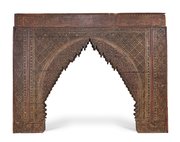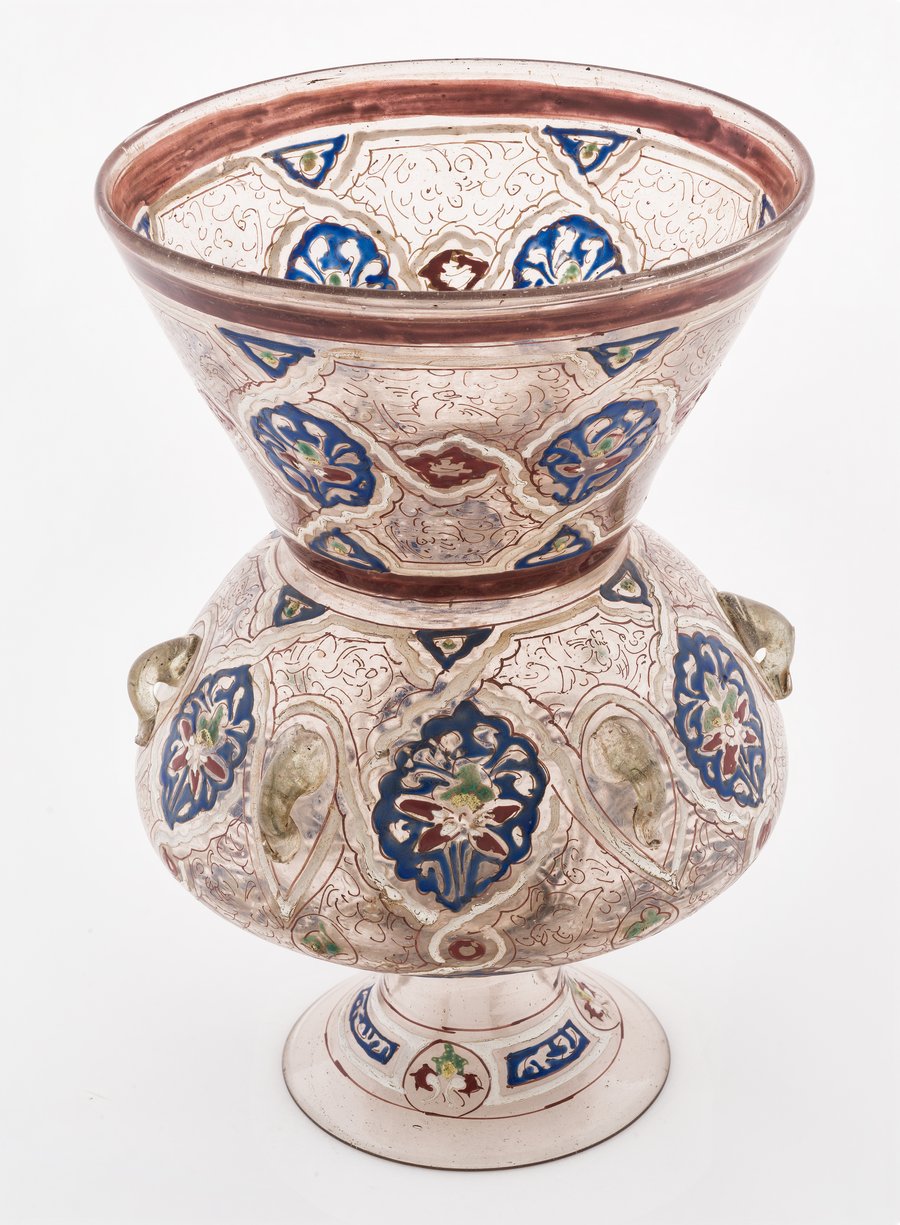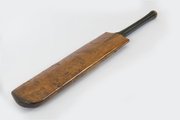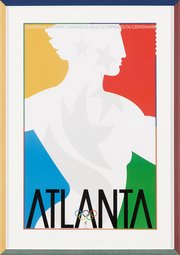
Mosque Lamp
Museum of Islamic Art
- Title:
- Mosque Lamp
- Patron:
- Sultan al-Nasir Badr al-Din Hasan ibn Muhammad ibn Qala'un
- Ruler:
- Sultan al-Nasir Badr al-Din Hasan ibn Muhammad ibn Qala'un
- Production place:
- Egypt
- Date:
- 1347 - 1365
- Period:
- Mamluk
- Title:
- Mosque Lamp
- Patron:
- Sultan al-Nasir Badr al-Din Hasan ibn Muhammad ibn Qala'un
- Ruler:
- Sultan al-Nasir Badr al-Din Hasan ibn Muhammad ibn Qala'un
- Production place:
- Egypt
- Date:
- 1347 - 1365
- Period:
- Mamluk
- Material:
- Glass, Enamel, Gold
- Technique:
- Glassblowing, Enamelling, Gilding, Applying
- Dimensions:
- 28
- Diameter:
- 18.7
Glass mosque lamps such as this splendid example were made in abundance during the Mamluk period in Egypt and Syria. Free blown, enameled and gilded, these lamps contained oil and were suspended from the ceiling of mosques, madrasas and palace complexes, illuminating the buildings with their beautifully executed decoration, including Qur’anic verses, proverbs, sultanate titles, or geometric and floral patterns. This particular lamp, with a rounded body and long sloping curved shoulder with a flared, conical mouth and trumpeted foot, has six applied loop handles around its body from which it would have hung. The lamp’s body and mouth are both decorated entirely with blue floral medallions outlined with white strapwork, set against loosely drawn red floral motifs. This example, although comparatively small in height, relates to a known set of other mosque lamps attributed to the reign of the Mamluk Sultan Hasan (r. . 747-763 AH/1347 61 CE). These lamps were most probably made for the madrasa of Sultan Hasan in Cairo, which was completed in 763-4 AH/1362-3 CE. Like many other examples, this lamp remained in its original structure until the 13th century AH/19th century CE, when many were sold and entered into museum collections worldwide.



